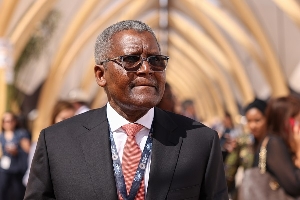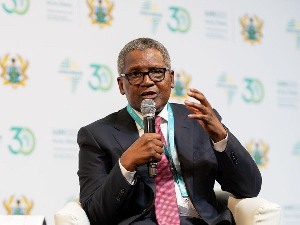Up to 849 million hectares of natural land – nearly the size of Brazil – may be degraded by 2050 should current trends of unsustainable land use continue, warns a report released on Friday by the United Nations Environment Programme (UNEP) in Davos, Switzerland.
It said the need to feed a growing number of people globally had led to more land being converted to cropland at the expense of the world’s savannah, grassland and forests.
This had resulted in widespread environmental degradation and loss of biodiversity, affecting an estimated 23 per cent of global soil.
The report said agriculture currently consume more than 30 per cent of the world’s land area, and crop-land covered around 10 per cent of global land.
“Between 1961 and 2007, crop-land expanded by 11 per cent, a trend that continues to grow,” it said.
The report, entitled “Assessing Global Land Use: Balancing Consumption with Sustainable Supply” was produced by the International Resource Panel: a consortium of 27 internationally renowned resource scientists, as well as 33 national governments and other groups, hosted by UNEP.
UN Under-Secretary-General and UNEP Executive Director, Achim Steiner, said: "The findings of the International Resources Panel show that the world has witnessed an unprecedented sharp decline in terrestrial ecosystem services and functions during the past decades. Forests and wetlands have been converted to agricultural land to feed growing populations but at a cost that is not sustainable."
He continued: "Recognizing that land is a finite resource, we need to become more efficient in the ways we produce, supply and consume our land-based products. We must be able to define and adhere to the boundaries within which the world can safely operate to save millions of hectares by 2050.”
“Recommendations from the report are meant to inform policy and contribute to on-going discussions on targets and indicators for sustainable resources management as the world charts a new course for sustainable development post-2015, " he added.
The report outlined the need and options to balance consumption with sustainable production.
It focused on land-based products, such as food, fuel and fibre, and described methods to enable countries to determine whether their consumption levels exceed sustainable supply capacities.
At the same time, it distinguished between gross and net expansion of cropland.
“While net expansion is a result of rising demand for food and non-food biomass – which cannot be compensated by higher yields – gross expansion comprises the shift of cropland to other areas due to losses caused by severe degradation.”
“Under a business-as-usual scenario, the net expansion of crop-land will range from 120 to 500 million hectares by 2050,” it said.
“Shifts to more protein-rich diets in developing countries and a growing demand for bio-fuels and bio-materials, especially in developed countries, are increasing the demand for land,” the report added.
Regional News of Sunday, 26 January 2014
Source: GNA












